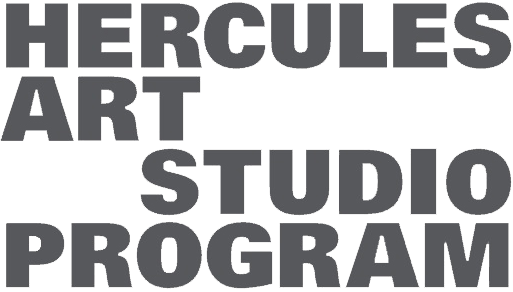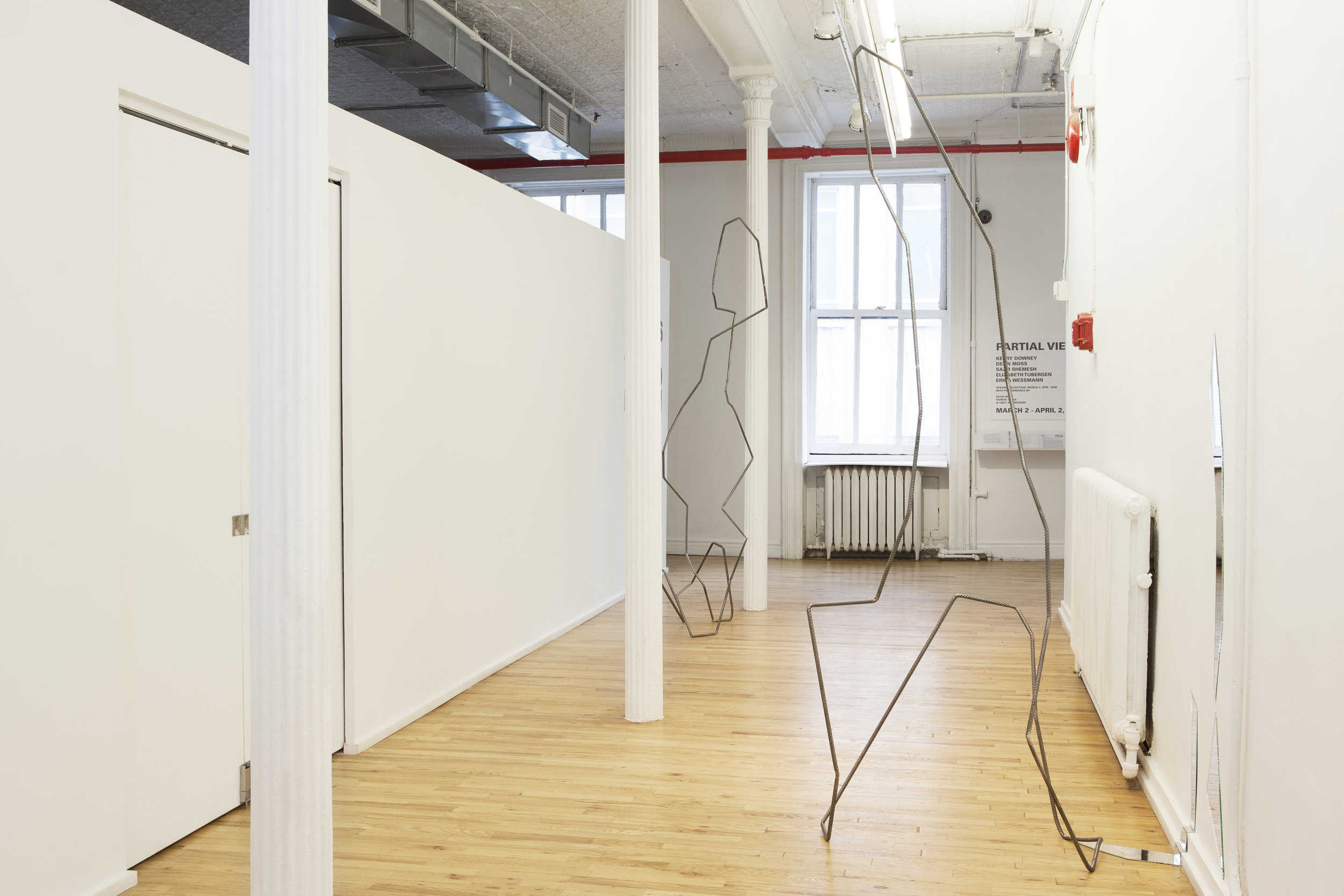Please join us Friday, March 2nd, at 6PM for the opening of "Partial Views".
Kerry Downey
Dean Moss
Saar Shemesh
Elizabeth Tubergen
Erica Wessmann
Opening reception: March 2nd, 6PM-9PM, with performance by Dean Moss, Samita Sinha, and Grey Macmurray at 6:30PM
On view: March 2nd - April 2nd, 2018
Saturday and Sunday, 12PM-6PM, and by appointment: info@herculesart.com
25 Park Pl. 3 Fl.
New York 10007
PARTIAL VIEWS
The Spomenik are public monuments unique to the former Yugoslavia and to its dream of pluralist authoritarianism, but as forms that reify paradox at the scale of the body, the relevance of these monuments persists. “Partial Views” is an exhibition project that explores their persistence.
'Spomenik' is the Serbo-Croatian/Slovenian word for 'monument', the root 'spomin' meaning memory. The Spomenik also commonly refer to a corpus of 37 public monuments made between 1960 and 1980 in the former Yugoslavia under Josip Broz Tito’s mandate. Although all commemorate the violence suffered under the Axis occupation of the region during WWII and acts of resistance by anti-fascist Partisans, also known as Tito’s army of rebels, many of the structures were designed and funded at the local level by the municipalities in which they are sited. As a result, as Saar Shemesh describes of those that she saw, the Spomenik are sometimes located behind someone’s barn or obscured by some element of infrastructure. Idiosyncratic and anti-monumental in their placement and relationship to the landscape, if not in their formal rhetoric. The awkward yet blustering architecture of a lapsed federation.
Elizabeth Tubergen took a photograph of Wessmann standing in the eye of a monument during the late spring of 2017, a photograph that Kerry Downey takes up in a video produced for the exhibition. Wessmann’s arms are outstretched so that they line up perfectly with the horizon behind them, the architecture of a body creating a dimensional bridge between foreground and background, between the moment these objects anticipate and the moment they are marooned in. Their gesture also encapsulates the paradox of the Spomenik: they think an impossible Yugoslavian unity.
Erica Wessmann describes the experience of traveling through the Balkans as movement through epic landscapes, terrority more green than seemed imaginable, on twisting roads over mountains, to random destinations. To Wessmann, the monuments figured forth the feeling that some past optimism had never been fully realized. It was hard, in such places, not to think of the many apocalyptic or sci-fi films in which the convergence of key elements at a given place, at a given time, save the world and preserve the future. Sixty years ago, Wessman felt, in what was then Yugoslvaia, those keys never converged. The world wasn’t saved. Now everyone is living in its decrepit ruins, represented by these monuments that stand sentry at that threshold into some safe and just future, one which was never crossed.
Some are immaculately maintained while others are dilapidated. The disparity in their condition testifies to a profound ambivalence about memory and monumentalization in a region that fought a series of ethnically-based civil wars for a decade, between 1991 and 2001, at the cost of 140,000 lives. In an interview with Downey, Tubergen describes the Spomenik as brutalist objects that make an authoritarian demand on the body. Yet, at the same time, in the way they are honored or abused, appropriated or disavowed entirely, these objects become a site for a kind of political practice over time. The Spomenik provide a ground for some relational dynamic with the History of Nationalism in the everyday lives of people living near them.
Dean Moss performs as a body obscured, rustling in the rigid material legacy of a black and white US nationalism. His careful movements about the room during the space of the opening of “Partial Views” investigate the conflict inherent in acts of assimilation. In a sense, Moss’s performance embodies the social space of the Spomenik, that strange marginal zone around an overbearing object designed to categorically UNIFY across an impossibly dense system of socio-political scars and power dynamics. He is accompanied by contemporary raga vocalist Samita Sinha and guitarist and vocalist Grey Macmurray.
Projected documentation of his work Board Dance, from 2001, shows Moss moving through a black box theatre space with a surface on which clips from various films are projected. He flashes the mirrored surface of this rigid support at the audience, flips it so that the surface can receive the next projection, then jumps over it in an easy gesture. Here again, Moss’s work is centered on the body playing in the interstice between the structural support of the image and its glimmering, ephemeral passage. Moss is fleshing out a performance between the lines of established formal rhetorical structures.
Tubergen’s work, Reenactment: Spit You Out (2018) is a forty-foot trestled armature drawn in space with the language of furniture. The sculpture is a giant, gently sloping ramp that rises to a height of eight feet at one end--a vantage point. It is also the phallus, toppled to the floor of Hercules’ gallery, with a soft surface strapped to its hard frame and spilling off the end of its wooden contours. Tubergen’s work is bench, but because it also a ramp, to sit on it is to be aware of a constant, though gentle, imbalance in one’s hips. To lay on it and stare at the ceiling is to struggle against gravity pulling the body down the ramp, spitting it back onto the floor of the exhibition space. This monument rejects the viewer, very softly.
A staircase, Vantage, is built in the interstitial zone between the bathrooms and the gallery at the far end of the exhibition space also rises to eight feet. Shemesh creates the possibility of a bird’s eye view of the exhibition and of the threshold between spaces that her work occupies. The work is a prop for the body’s capacity to shift perspective that Shemesh proposes as metaphor for the experience of the monuments -- a machine for watching space differently.
Downey’s work uses Tubergen’s photographs of the monuments as their point of departure. The drawing is made by projecting a photo of one of the more figurative monuments to the scale of Downey's body, tracing it with hot glue, then sanding the image away as delicately eroded lines. A brutalist masked form emerges from a field of dark graphite. In their video, Downey runs a computer cursor over the photographs, zooming into them to the point of pixelation, then out, then in again. The audio track is Downey's edited interview of Tubergen speaking about her experience of the Spomenik. Both physical and digital techniques are laborious attempts to “touch” the physical monuments, to make meaning of the distant objects and their histories. These works remain primarily a record of the desire to apprehend or to reach for something absent, and in that sense they are also a portrait of the Spomenik.
Wessmann works from the assumption that movement, the experience of sequential time in space, surrounds our bodies so completely that it is rendered invisible. Wessmann’s linear, dark forms loom throughout the gallery. Constructed with rebar, they are ghostly presences constantly shifting between two and three dimensional space. They are straddling a perceptual threshold and, through this gesture, making that threshold visible. Wessmann’s flopping concrete work Fundamentals serves to connect these ghostly figures to a heavy, sagging, partially fallen portal form. In response to the Spomenik, Wessmann, like Moss, makes things that explore the collapse between the experience of a body and the visual rhetoric of power.
Text by Natasha Marie Llorens
Marseille, February 2018













